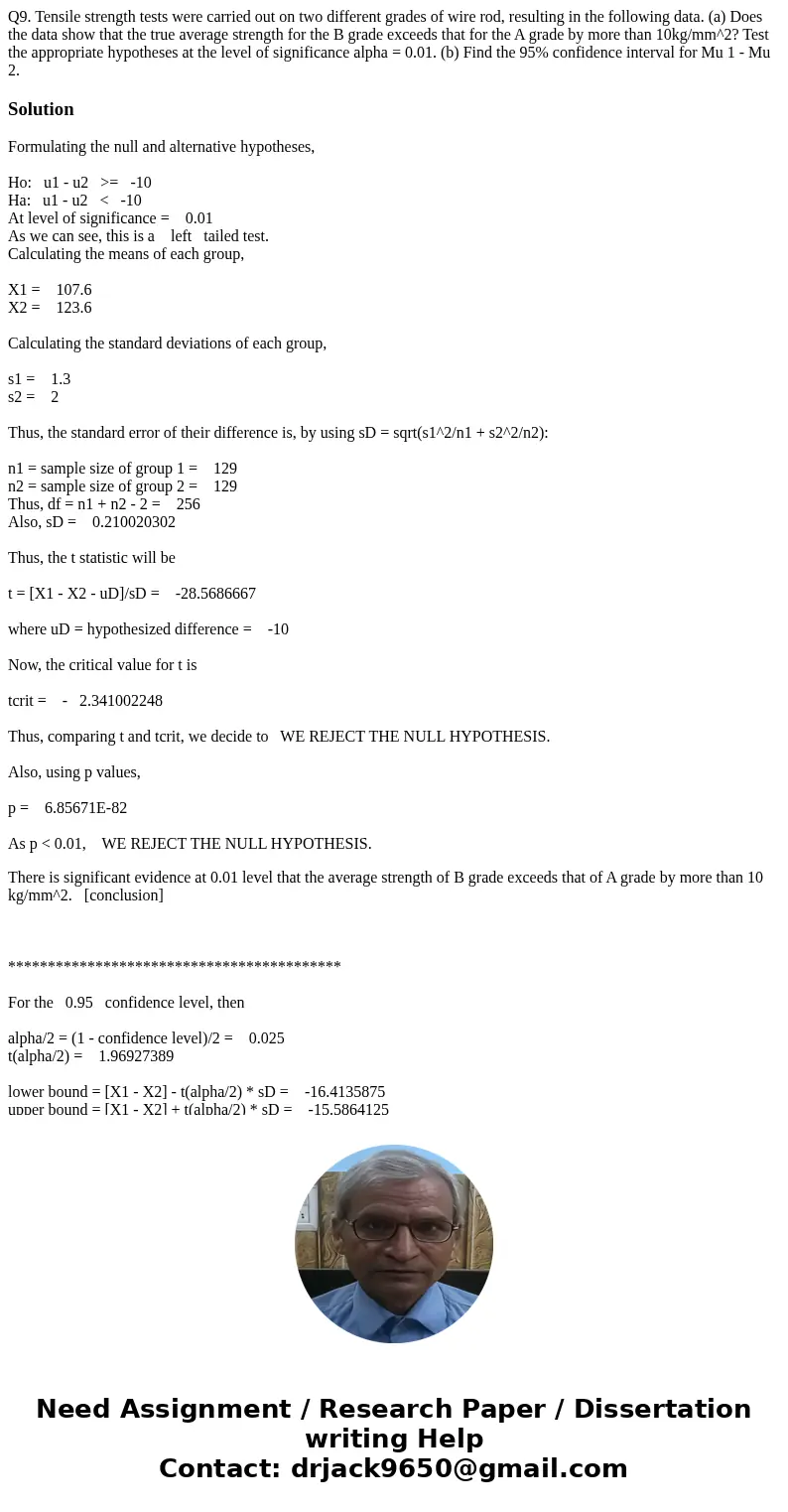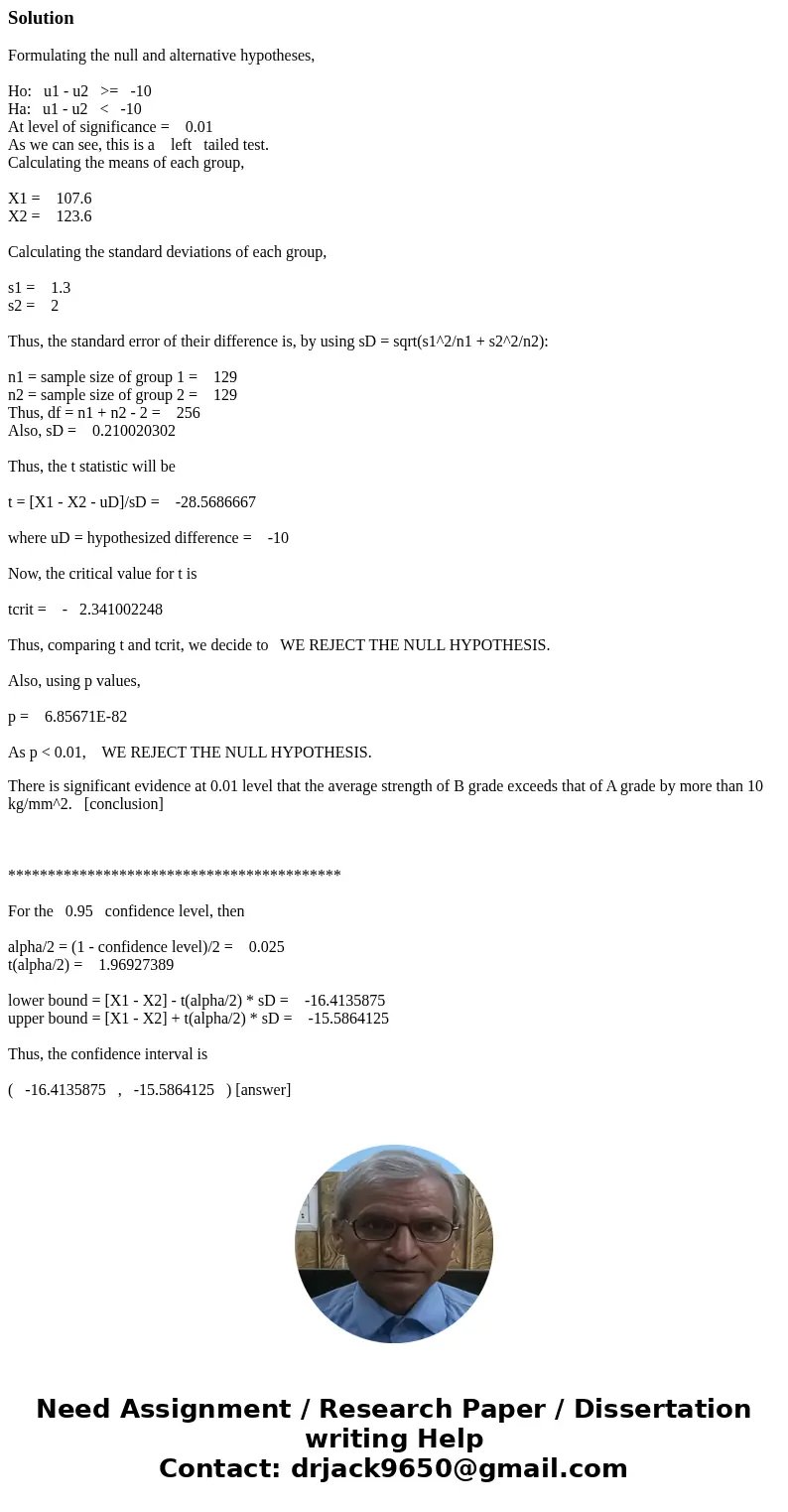Q9 Tensile strength tests were carried out on two different
Solution
Formulating the null and alternative hypotheses,
Ho: u1 - u2 >= -10
Ha: u1 - u2 < -10
At level of significance = 0.01
As we can see, this is a left tailed test.
Calculating the means of each group,
X1 = 107.6
X2 = 123.6
Calculating the standard deviations of each group,
s1 = 1.3
s2 = 2
Thus, the standard error of their difference is, by using sD = sqrt(s1^2/n1 + s2^2/n2):
n1 = sample size of group 1 = 129
n2 = sample size of group 2 = 129
Thus, df = n1 + n2 - 2 = 256
Also, sD = 0.210020302
Thus, the t statistic will be
t = [X1 - X2 - uD]/sD = -28.5686667
where uD = hypothesized difference = -10
Now, the critical value for t is
tcrit = - 2.341002248
Thus, comparing t and tcrit, we decide to WE REJECT THE NULL HYPOTHESIS.
Also, using p values,
p = 6.85671E-82
As p < 0.01, WE REJECT THE NULL HYPOTHESIS.
There is significant evidence at 0.01 level that the average strength of B grade exceeds that of A grade by more than 10 kg/mm^2. [conclusion]
******************************************
For the 0.95 confidence level, then
alpha/2 = (1 - confidence level)/2 = 0.025
t(alpha/2) = 1.96927389
lower bound = [X1 - X2] - t(alpha/2) * sD = -16.4135875
upper bound = [X1 - X2] + t(alpha/2) * sD = -15.5864125
Thus, the confidence interval is
( -16.4135875 , -15.5864125 ) [answer]


 Homework Sourse
Homework Sourse